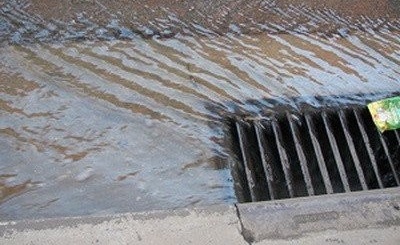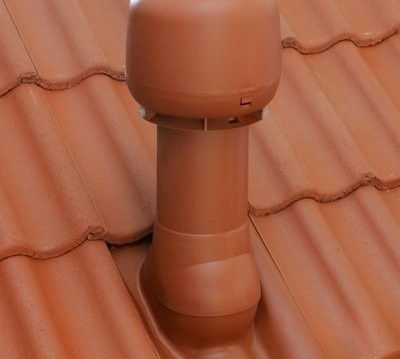Rules of operation and maintenance of the drainage system and stormwater drainage
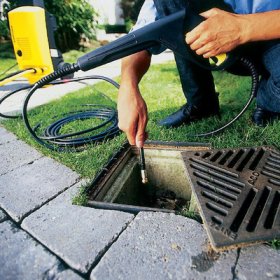
A drainage system is an essential component for most households. Without it, the foundation of the house and the entire plot is threatened with flooding. Whether it is a system for removing moisture from the site or drainage of the foundation, the design must be properly operated and maintained. Only then will its service life be long and it will not cause trouble to its owner. So how to properly operate the drainage and storm sewer systems, what measures for their maintenance must be carried out? Let's figure it out.
Content
Drainage system maintenance
All utilities, and the drainage system are no exception, need regular care and maintenance. There are two types of service events.
Periodic check
Includes regular inspection and cleaning of collectors and drainage wells. After high water or heavy rains, such inspections are carried out without fail. The design of the drainage well is such that soil particles are deposited at its bottom. Over time, they accumulate a lot so that they can penetrate into the drainage pipes. It is important to monitor the level of accumulated sediment. It should not reach the level of the outlet-inlet of the pipe. If a large amount of contamination is detected, the well needs to be cleaned.
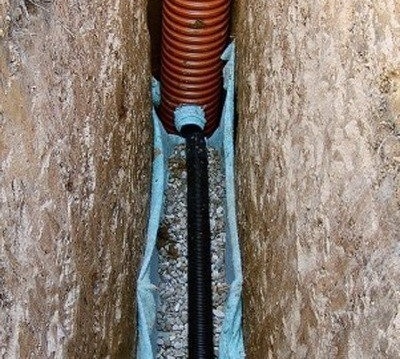
When arranging the drainage system, special inspection wells are installed to facilitate the care of drains
You will need to clean the device drainage pump. When choosing a suitable model of equipment, special attention is paid to technical characteristics. Some appliances are designed to pump pure water only. They will not be able to work with liquids contaminated with fine inclusions, fibers, sand, etc. If the well is very dirty, it will be correct to choose a drainage-fecal pump that is capable of pumping water even with large contaminants. It is equipped with a special grinding wheel, which crushes all large inclusions.
Experts recommend using equipment equipped with a float for cleaning drainage wells. This is the name of the switch that floats on the surface. When the device is at the bottom, it turns off the pump. If the unit is used without such a float, it must be constantly monitored. The engine that appears on the surface may overheat, because the liquid in which it is immersed cools it.
Cleaning procedure drainage well performed as follows:
- We immerse the pump in the well, fixing it at a distance of 0.5-1 m from the bottom.
- Turn on the equipment. The pumped liquid is cleaned of contaminants.
- Under pressure, we supply clean water to the well, which destroys silty sediments at the bottom.
- In the process, the pump is sometimes understood to the surface and cleaned.
After cleaning, the well is securely closed; the same is true for pipe outlets. This is necessary to protect the system from debris and contamination.
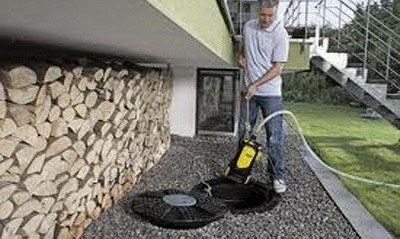
Drainage pumps are used to clean the inspection wells. It is better to choose a device with a so-called float, which does not need to be constantly monitored
Drainage overhaul
The system is thoroughly cleaned once every several years and involves the removal of deposits from the walls of the pipes and their repair if necessary. An event can be carried out in various ways.
System mechanical cleaning
The choice of cleaning method depends on the design features of the drains and their location. For parts lying on the surface, it is optimal to choose manual cleaning. Such work can be done independently, without the involvement of specialists. If the drainage is deepened into the soil, more complex measures associated with the excavation will be required. For them, you may need a pneumatic installation with a shaft and a cleaning tool, as well as a special nozzle that will grind large impurities and eliminate deposits on the walls of the pipeline. Such cleaning is recommended at least once every 3-4 years.
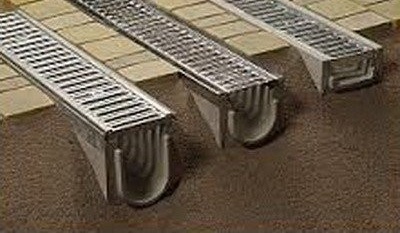
Drains that are not buried in the ground can be cleaned manually without the use of special equipment or the involvement of specialists.
Flushing drains
Such cleaning of the system is carried out in sections, using a pump and a hose for these purposes. Washing is carried out every 10-15 years. To carry out this procedure, it is necessary to ensure access to every detail from all sides. On one side, the pipe is connected to the well, and the other outlet is brought to the surface through special outlets laid down during the construction phase of the system.
With the help of fittings, the pipes are extended and brought to the right place. The flushing process consists in connecting the pumping equipment alternately to one and to the second edge of the pipe, after which water passes through it under pressure. In this case, a compressor is also used, which supplies compressed air to the system. This method is very effective because debris and deposits are well crushed and washed out of drains by a stream of water.
Cleaning the system from siltation
To prevent siltation of the drainage system, geofabric is used, which is laid at the stage of installation of drains. But even in this case, the trench can be silted up and then it is cleaned with nitrate. The operation is carried out as follows:
- The top layer of turf to crushed stone is removed.
- Nitrate scatters over the rubble backfill.
- The system spills abundantly in water.
- Sod stacks in place.
This method can significantly extend the life of deep drainage. However, it should be used very carefully and only in emergency cases, since the use of nitrate in a personal plot can adversely affect the quality of the soil.
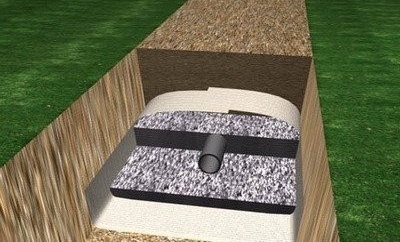
To prevent the system from silting up, geotextile is used when laying drainage. Crushed stone or sand cushion “wraps around” with protective material
Drainage system care and winter mode
To maintain the drainage system in working condition, it is recommended to follow a few simple rules:
- The topsoil must always be loose in order to absorb moisture well. Therefore, all movements of heavy equipment on the site should be excluded.
- When designing a drainage system, it is optimal to install an inspection well at the beginning, at the end and at each turn with an interval of one, which will simplify the maintenance of the system and increase its efficiency.
- The collector should be cleaned regularly. This must be done once every two to three years.
Timely maintenance of the drainage system and strict observance of the rules for its installation ensures long-term trouble-free operation of the system. According to experts, the life of such a drain is an average of fifty years.After that, the polymer parts will begin to break down, but the presence of a volumetric filter will allow the system to function for about another twenty years.
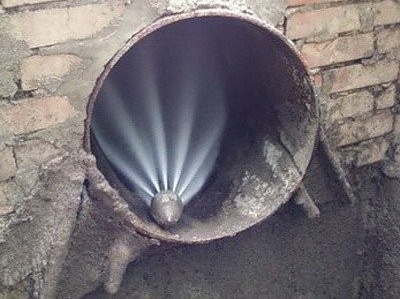
The system can be cleaned with highly efficient professional methods. The picture shows the hydrodynamic cleaning of storm sewers
Drainage system functions by periods. The greatest loads occur in spring and autumn, when snow melts and it rains. In summer and winter, the load on the system is significantly reduced. In addition, the liquid level in drains in winter is minimal. This is due to the fact that water does not flow from above, and the groundwater level is the lowest. This does not apply to peat soils. Here drainage can work year-round. The water level in the pipes can be determined in a very simple way - by looking into the inspection well. Even if there is liquid in it, do not worry, provided that the following rules are observed:
- Drains are laid below the level of freezing.
- The pipes have a sufficient diameter. As practice shows, in a part with a diameter of 110 mm, the water layer is on average 10 mm. Thus, the air present in the pipes will not allow them to burst.
- Drains are stacked in a volumetric crushed stone filter, which serves as a good heat insulator.
If these rules are met, special preparation for the winter is not required. It will only be necessary to remove the drainage pump from the drainage well when the structure is not insulated. It will be necessary to install the equipment in place before the spring flood, that is, approximately in late March - early April.
Proper care of storm sewers
Intended for collection and removal from the rainwater section, storm sewers also need maintenance.
Repair and cleaning of storm water
A signal that the system fails will be a deterioration in its bandwidth or complete obstruction of the structure. When such symptoms appear, the stormwater is opened and inspected. After the detection of defective segments, they are replaced with serviceable ones. After which the system is tested. If everything is normal, they fill up with soil. It must be borne in mind that all work must be carried out quickly, otherwise there is a risk of flooding the territory. This is especially true for areas where the function of storm sewage includes water purification.
To equip the system, steel pipes with a diameter of 100 mm are usually used. Proper installation of a storm shower also assumes the presence of a water lock with a drain valve for discharging water. Metal parts are damaged by corrosion over time. During the repair, defective areas are replaced with plastic parts of the same diameter. Steel should leave only the outlet pipe, which is located immediately after the shutter. This will make it possible to increase the mechanical strength of the system. Periodic stormwater cleaning carried out similarly to the cleaning of the drainage system.
Sewage treatment equipment
To reduce the number of system cleanings, special elements are used that are installed directly in the structure. The simplest device is a filter that traps large debris. For the most effective wastewater treatment, the following equipment is used:
- absorption blocks;
- sand traps;
- UV disinfection stations;
- filters catching petroleum products;
- sedimentation tanks;
- delimiters.
When choosing cleaning elements for stormwater, one must proceed from the existing conditions. For ordinary private houses, a sand trap will be sufficient. Everything else may be needed only for production facilities. For example, if an automobile is being repaired in the territory served by storm sewers, it would be advisable to install a filter that traps oil products.

To protect the storm sewer of a private house, filters that stop large debris and sand traps are quite enough
Regular maintenance of the drainage system and storm sewers is the key to their long and trouble-free functioning. Do not save on cleaning procedures and neglect the simple rules of competent operation, system failure and the need to completely replace it will become a very expensive event. A zealous owner understands that regular cleaning of the system, carried out independently or with the assistance of specialists, maintains the system in working condition and extends its life.
